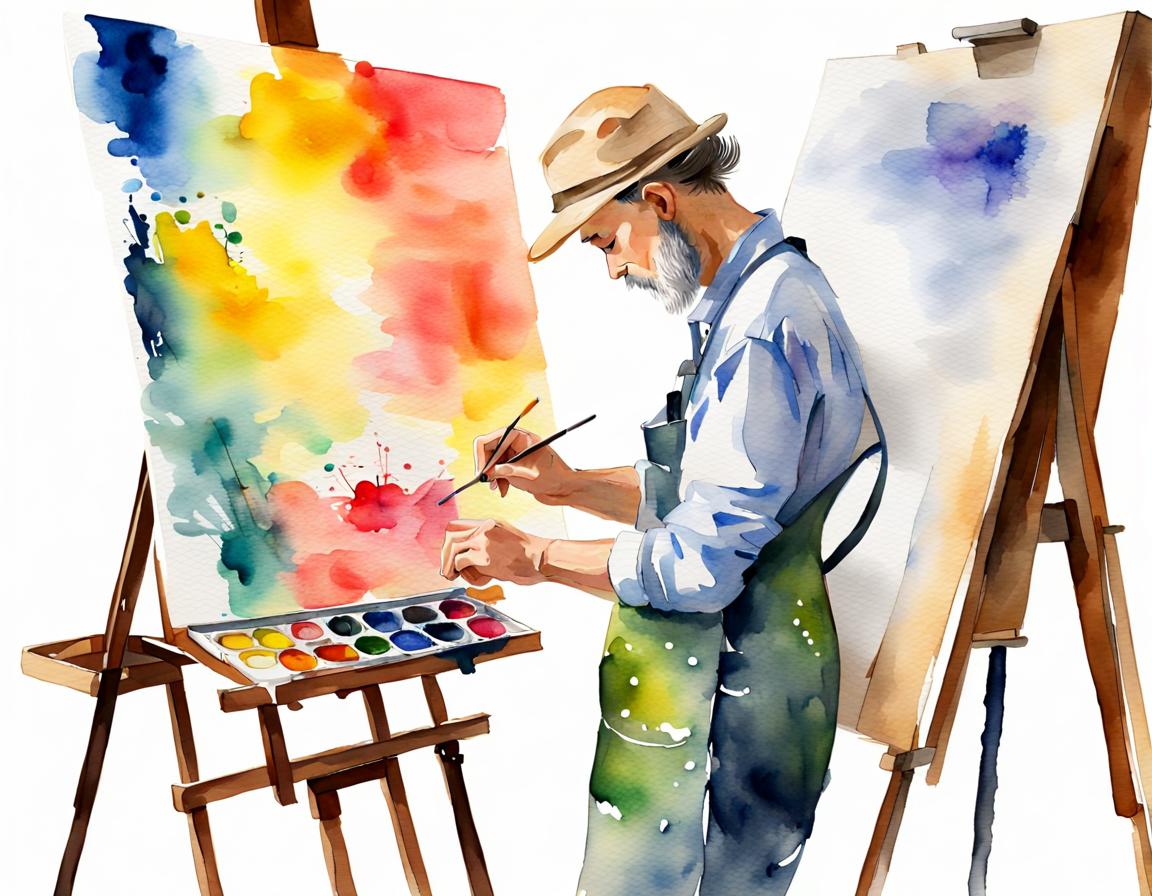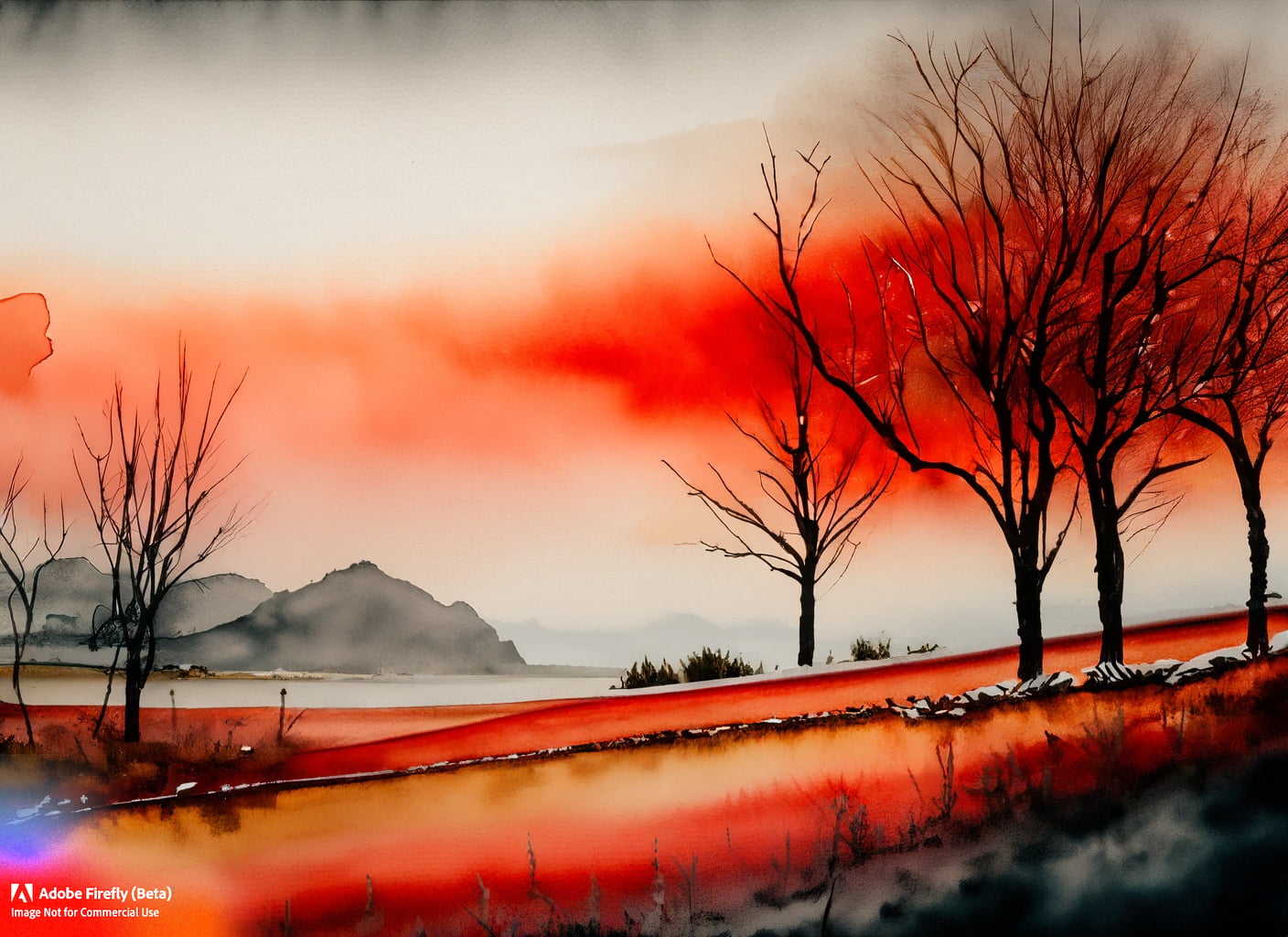Watercolor painting is a beautiful and versatile medium that allows artists to create vibrant and expressive artworks. One of the fundamental aspects of watercolor painting is understanding how to mix colors effectively. By combining primary, secondary, and tertiary colors, artists can achieve a wide range of hues, shades, and tones. In this article, we will explore the process of mixing these colors in watercolor and provide you with valuable tips to enhance your painting skills.
Introduction
Watercolor painting relies on the principle of color mixing to achieve the desired visual effects. By combining different pigments, artists can create a vast spectrum of colors, from vivid and saturated to subtle and muted tones. Understanding the principles behind primary, secondary, and tertiary colors is essential for mastering color mixing in watercolor.
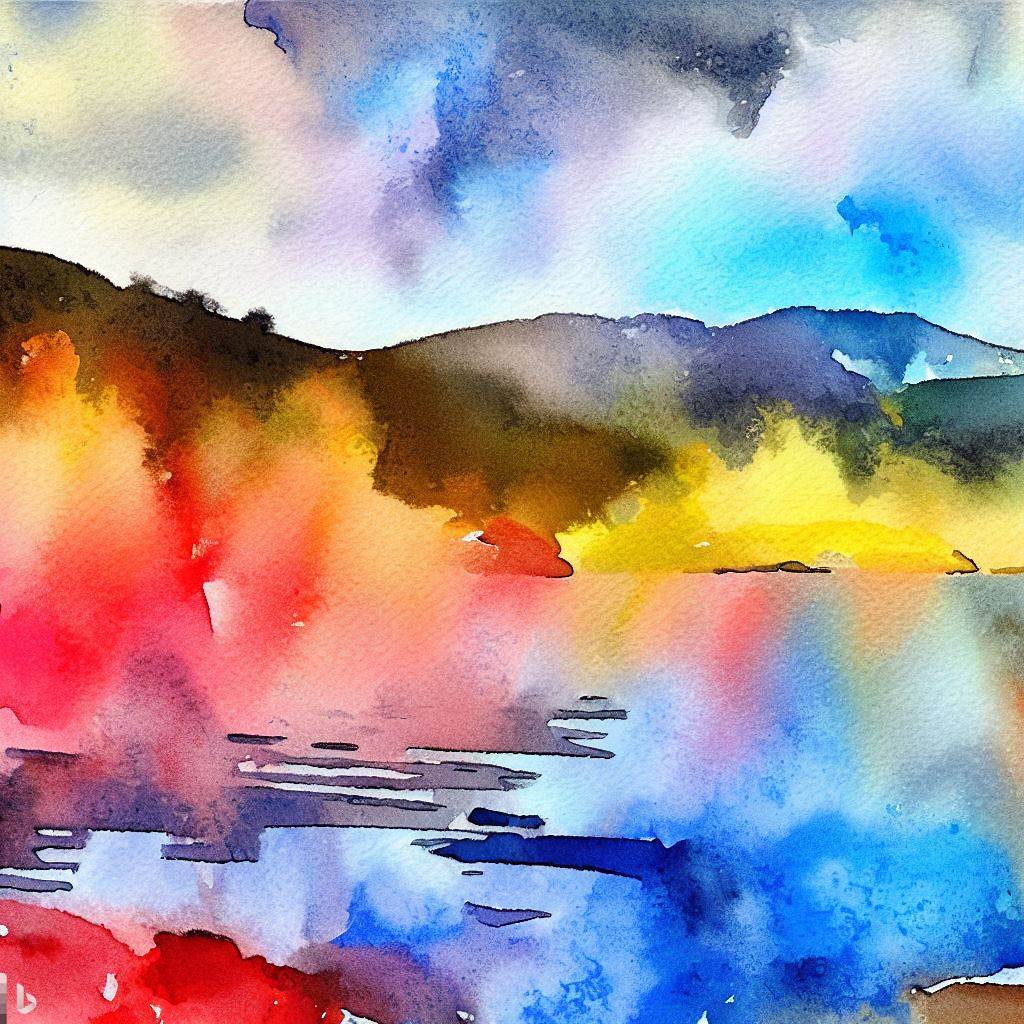
Understanding Primary Colors
Primary colors are the foundation of color theory. In watercolor, the primary colors are red, blue, and yellow. These colors cannot be created by mixing other colors together. Instead, they serve as the basis for creating all other colors in the color wheel.
Exploring Secondary Colors
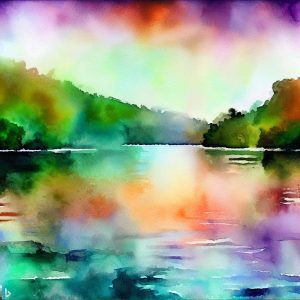
Secondary colors are obtained by mixing two primary colors together. The secondary colors in watercolor are green, purple, and orange. Green is created by mixing blue and yellow, purple by combining blue and red, and orange by blending red and yellow. These colors offer a broader range of possibilities for artists to work with.
Unveiling Tertiary Colors
Tertiary colors are the result of mixing a primary color with a secondary color. They provide even more diversity and subtlety in the color spectrum. Tertiary colors can be achieved by blending primary colors in varying proportions. For example, combining more blue with a little purple will yield a bluish-purple hue.
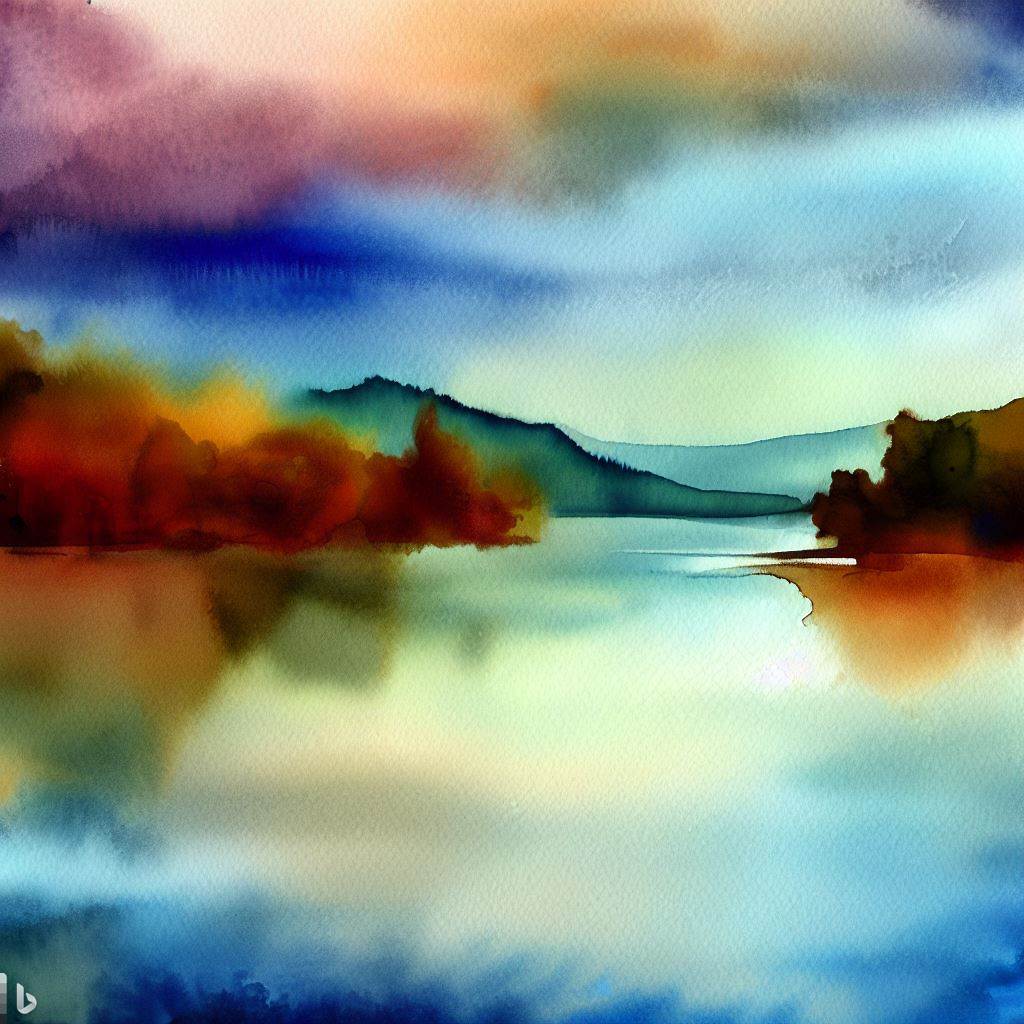
Mixing Primary Colors in Watercolor
To mix primary colors effectively in watercolor, follow these steps:
- Prepare a clean palette or mixing tray.
- Squeeze a small amount of each primary color (red, blue, and yellow) onto the palette.
- Dip a clean brush into water and moisten the desired primary color.
- Transfer a small amount of the moistened primary color to a separate area on the palette.
- Repeat the process with the other primary colors.
- Gradually mix the colors together, observing the changes in hue and saturation.
- Adjust the proportions of each primary color until you achieve the desired shade or tone.
- Test the mixed color on a scrap piece of paper before applying it to your artwork.
Remember, experimentation is key. By varying the ratios and intensities of the primary colors, you can discover unique and captivating shades.
Creating Secondary Colors in Watercolor
To create secondary colors in watercolor, follow these steps:
- Clean your palette or use a new one to avoid contaminating the colors
- Squeeze a small amount of the two primary colors you want to mix onto the palette.
- Use a clean brush to moisten the first primary color.
- Transfer a small amount of the moistened primary color to a separate area on the palette.
- Repeat the process with the second primary color.
- Gradually blend the two colors together, observing the resulting secondary color.
- Adjust the proportions of each primary color to achieve the desired intensity.
- Test the mixed color on a scrap piece of paper before applying it to your artwork.
Exploring various combinations of primary colors will help you unlock a vast array of secondary colors to enhance your watercolor paintings.
Experimenting with Tertiary Colors
Tertiary colors provide artists with a wide range of nuanced and sophisticated shades. To experiment with tertiary colors in watercolor, follow these steps:
- Ensure your palette is clean and free from any residual colors.
- Squeeze a small amount of primary color onto the palette.
- Moisten a clean brush and transfer a small amount of the primary color to a separate area.
- Choose a secondary color that you want to mix with the primary color.
- Moisten a clean brush with the secondary color and transfer a small amount to the palette.
- Gradually blend the primary and secondary colors together, noting the resulting tertiary color.
- Adjust the proportions of each color to achieve the desired hue.
- Test the mixed color on a scrap piece of paper before incorporating it into your artwork.
The versatility of tertiary colors allows you to add depth and complexity to your watercolor paintings.
Enhancing Your Color Mixing Skills
To improve your color mixing skills in watercolor, consider the following tips:
- Familiarize yourself with color theory principles and the color wheel.
- Start with a limited palette of primary colors and gradually expand your range.
- Keep a record of the color combinations you experiment with.
- Practice blending colors to achieve smooth transitions and seamless gradients.
- Experiment with different water-to-paint ratios for varying levels of transparency.
- Observe and study the works of accomplished watercolor artists to gain inspiration and insights.
With time, practice, and experimentation, your color mixing skills will continue to evolve and contribute to your artistic growth.
The Importance of Color Theory
Understanding color theory is crucial for watercolor artists. It provides a framework for creating harmonious color combinations, effectively conveying mood and emotions, and establishing visual balance in your artwork. Invest time in studying color theory to enhance your watercolor paintings.
Tips for Harmonious Color Combinations
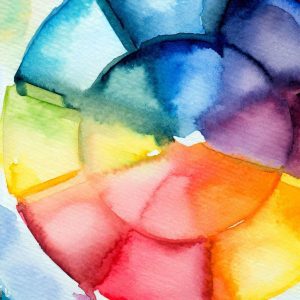
- Use complementary colors (colors opposite each other on the color wheel) for vibrant contrast.
- Explore analogous colors (colors adjacent to each other on the color wheel) for harmonious and soothing effects.
- Experiment with warm colors (reds, oranges, yellows) and cool colors (blues, greens, purples) to create visual temperature variations.
- Introduce neutral colors (grays, browns) to balance vibrant hues and create subtle transitions.
Using Complementary Colors for Impact
Complementary colors, when placed side by side, intensify each other and create a dynamic visual impact. Utilize this principle to add energy and interest to your watercolor paintings. For example, juxtaposing red and green or orange and blue can produce captivating results.
Achieving Color Gradations and Blends
Watercolor is renowned for its ability to create smooth color gradations and blends. To achieve this effect, follow these techniques:
- Wet-on-wet: Apply wet paint onto a wet surface to create soft and seamless color transitions.
- Wet-on-dry: Apply wet paint onto a dry surface to achieve crisp and defined color edges.
- Layering: Gradually build up layers of translucent washes to create depth and luminosity.
- Glazing: Apply thin, transparent washes over dry layers to enhance color intensity and depth.
Mastering these techniques will allow you to achieve stunning color gradations and blends in your watercolor paintings.
Layering Techniques for Depth and Dimension
Layering is a fundamental technique in watercolor painting that adds depth and dimension to your artwork. Consider the following layering techniques:
- Transparent layering: Apply translucent washes of color, allowing previous layers to show through.
- Opaque layering: Use more concentrated pigments to cover underlying layers, creating solid shapes and textures.
- Dry brush layering: Apply paint with a dry brush to create textured and grainy effects.
- Lifting: Remove or lift off paint selectively to reveal the layers beneath.
Experimenting with layering techniques will open up endless possibilities for creating captivating watercolor paintings.
Incorporating Texture and Effects
Watercolor offers opportunities to incorporate texture and special effects into your artwork. Here are some techniques to consider:
- Salt technique: Sprinkle salt onto wet paint to create unique crystalline patterns.
- Splattering: Flick or tap a loaded brush to create controlled or random splatters.
- Masking: Use masking fluid or tape to preserve specific areas of your paper from paint.
- Wet-on-dry texture: Apply thick paint with a dry brush or palette knife to create raised textures.
These techniques can add visual interest and a tactile quality to your watercolor paintings.
Conclusion
Mastering the art of mixing primary, secondary, and tertiary colors in watercolor opens up a world of possibilities for artists. Understanding the principles of color theory, practicing color mixing techniques, and experimenting with different combinations will elevate your watercolor paintings to new levels. Embrace the joy of exploring colors, be open to experimentation, and let your creativity flow.
FAQs – How to Mix Primary, Secondary, and Tertiary Colors in Watercolor
Q1: Can I mix more than three colors in watercolor?
A1: Yes, you can mix more than three colors in watercolor. The primary, secondary, and tertiary colors serve as a foundation, but you can combine multiple colors to achieve unique shades and tones.
Q2: What is the best way to store and organize watercolor paints?
A2: It is recommended to store watercolor paints in a cool, dry place away from direct sunlight. Organize them in a palette or airtight containers to keep them fresh and easily accessible.
Q3: How can I achieve vibrant colors in my watercolor paintings?
A3: To achieve vibrant colors, use high-quality pigments, layer transparent washes, and apply paint with sufficient intensity. Experiment with different techniques and color combinations to create dynamic and vivid effects.
Q4: Can I mix watercolors with other types of paint?
A4: It is generally recommended to avoid mixing watercolors with other types of paint, as they have different properties and may not blend well together. Stick to using watercolors with watercolor paints for optimal results.
Q5: Are there any safety precautions I should take when working with watercolor paints?
A5: While watercolor paints are generally safe to use, it is advisable to work in a well-ventilated area and avoid ingesting or inhaling the paint. Wash your brushes and hands thoroughly after painting.
